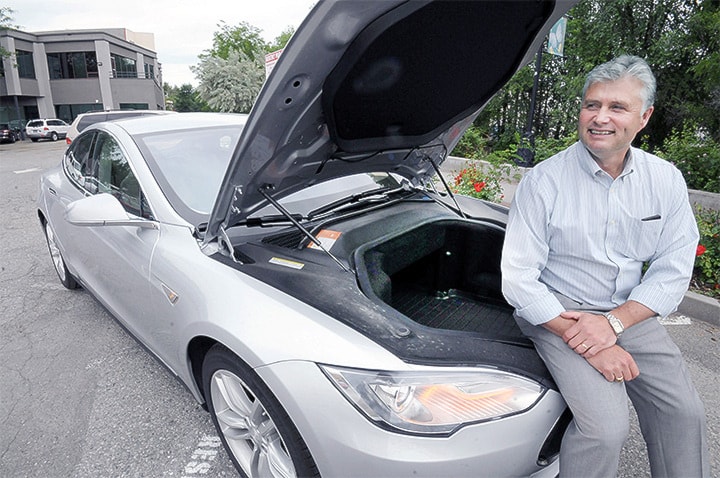Two electric car charging stations in Penticton that cost taxpayers at least $8,000 were used just eight times in their first year, although proponents insist the payoff will come later.
Okanagan College flipped the switch on the stations in April 2013.
Each unit cost $5,000, with three-quarters covered by the B.C. government’s $2.7 million Community Charging Infrastructure Fund and the balance by the school.
The eight charging sessions lasted a total of 21 hours and four minutes, according to data supplied by the college.
Another eight stations installed at three other campuses were also infrequently used, but a spokeswoman for the school said it expected to be ahead of the curve on electric cars.
“We’ve seen this with other initiatives that we’ve undertaken, when we start maybe a little bit earlier than the general trends among the population, then people catch up,” said Christine Ulmer.
According to ICBC, there were 662 electric cars insured in B.C. in 2013, but just 27 of them in the Southern Interior, including one in Penticton that belongs to Lance Johnston.
He purchased a high-end Tesla last year for “over six figures,” and said it has a range of about 400 kilometres that can be travelled with only $8 worth of electricity.
The financial advisor paid $2,000 to have a charging station installed at his house, so he only uses public facilities while travelling out of town.
He said units like those at Okanagan College are underpowered and inconveniently located.
“They’re just there for a pinch if you can waste two hours and get a 30-, 50-kilometre range just to get home,” said Johnston. “It should be at a hotel, or where people can do other things. It should be in a public spot. You can’t go and park at the college and do anything. It’s the right idea; it’s the wrong place.”

But a spokesman for the Vancouver Electric Vehicle Association said there needs to be a critical mass of public charging stations before the cars gain more widespread acceptance.
“It’s the chicken-and-egg thing. People will be reluctant to buy electric cars when there’s no infrastructure,” said John Stonier.
Growing the network is even more important in tourist areas like the South Okanagan, he continued, which is relatively close to an estimated 100,000 electric vehicles on the Pacific Coast.
“There’s a huge marketing opportunity right now, and it’s bigger than free WiFi in hotels ever was, and it’s to make sure that every bed-and-breakfast and every hotel in your tourism destination has a charging outlet,” he said.
At the moment, however, many lower-end electric cars would be unable to make it here from the Lower Mainland due to a lack of charging stations en route, Stonier added, which he said points to the need for more public terminals.
Not so, according to the head of the B.C. branch of the Canadian Taxpayers Federation, who thinks building such infrastructure should be left to the private sector.
“We’re big believers in the free market, and if there’s a market for electricity to power cars, every gas station in the province would be jumping on it,” said Jordan Bateman.
“But instead, you have government first of all subsidizing electric car purchases… and then giving them free power and free charging,” he continued. “They’re really trying to create a market where none exists.”
According to data provided by the Ministry of Environment, there have been 30,700 charging sessions at 330 stations built since April 2013 through the Community Charging Infrastructure Fund.
It estimates those plug-ins negated the need for 71,000 litres of gasoline and thereby avoided 170 tonnes of greenhouse gas emissions.
